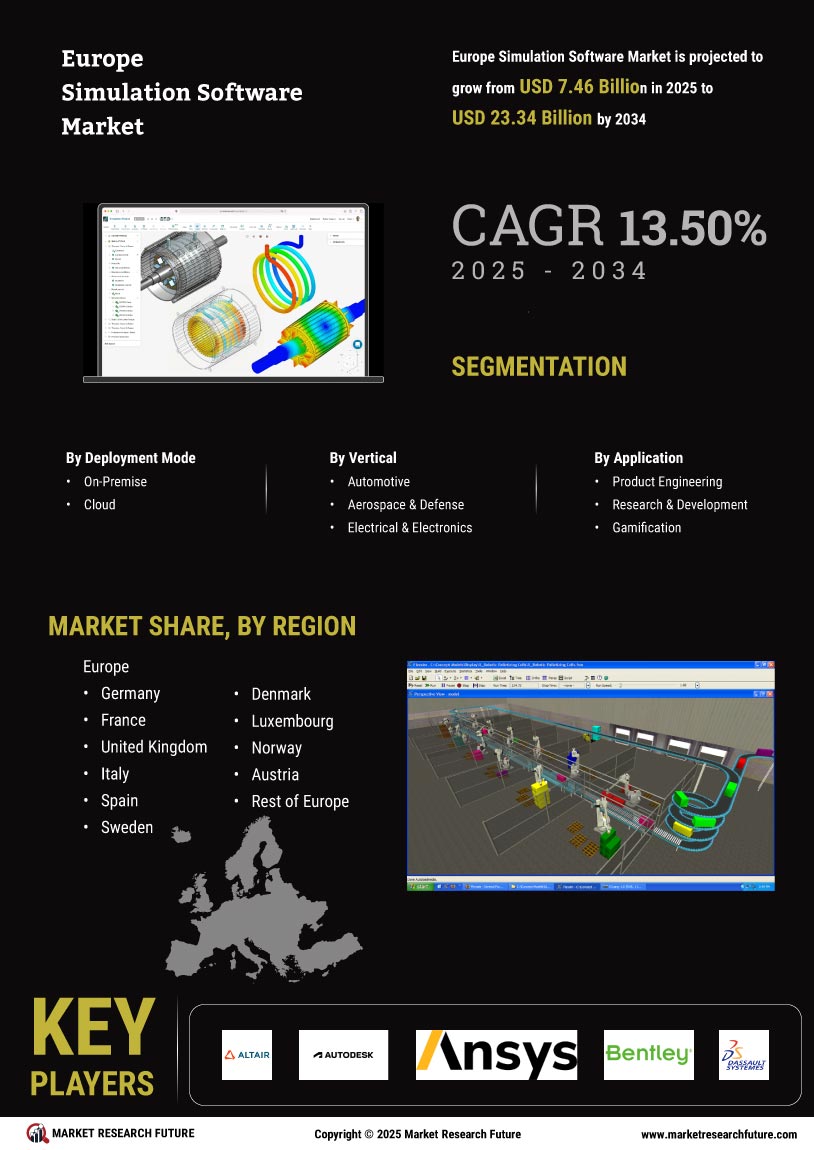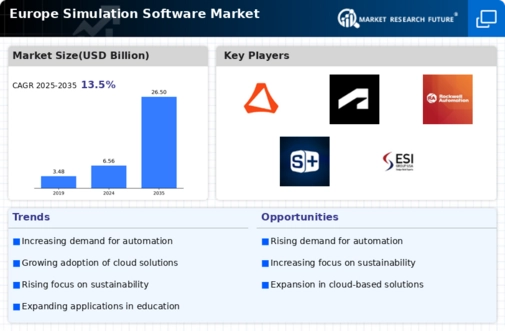Growing adoption of innovative technologies in simulation tools is driving the market growth
The European Simulation Software market CAGR is expanding due to the surging adoption of innovative technologies in simulation tools. As industries across sectors such as manufacturing, automotive, aerospace, healthcare, and energy strive for efficiency, safety, and cost-effectiveness, simulation software emerges as a critical enabler. One of the key reasons boosting market growth is the integration of advanced technologies like artificial intelligence (AI), machine learning (ML), and virtual reality (VR) into simulation tools. These technologies enhance the accuracy, complexity, and capabilities of simulations, allowing for more realistic and comprehensive modeling of real-world scenarios.
AI and ML algorithms are increasingly being incorporated into simulation software to optimize processes, predict outcomes, and automate decision-making. By leveraging vast amounts of data, AI-powered simulations can simulate complex systems with greater fidelity and efficiency, enabling engineers and analysts to explore a wide range of scenarios and identify optimal solutions. Moreover, AI-driven simulations facilitate real-time analysis and adaptive modeling, enabling organizations to respond swiftly to changing conditions and improve operational resilience. Virtual reality (VR) and augmented reality (AR) technologies are also revolutionizing the European simulation software market by providing immersive and interactive simulation experiences.
Furthermore, the growing emphasis on digital twin technology is fueling the adoption of simulation software across Europe. Digital twins, virtual replicas of the physical assets or systems, enable organizations to simulate and monitor real-time performance, predict maintenance needs, and optimize operations. By integrating simulation software with IoT sensors and data analytics platforms, digital twins facilitate predictive maintenance, asset optimization, and product innovation, offering substantial benefits across industries such as manufacturing, healthcare, and smart cities. Additionally, the proliferation of cloud computing and software-as-a-service (SaaS) models is democratizing access to simulation software, particularly for small and medium-sized enterprises (SMEs) across Europe.
Cloud-based simulation platforms offer scalability, flexibility, and cost-effectiveness, enabling organizations to leverage advanced simulation capabilities without significant upfront investments in the infrastructure or licensing fees. Thus driving the revenue of the Simulation Software market.
The ongoing advancements in computational power and algorithmic sophistication are reshaping the landscape of simulation software, fostering innovation across diverse sectors in Europe.
European Commission















